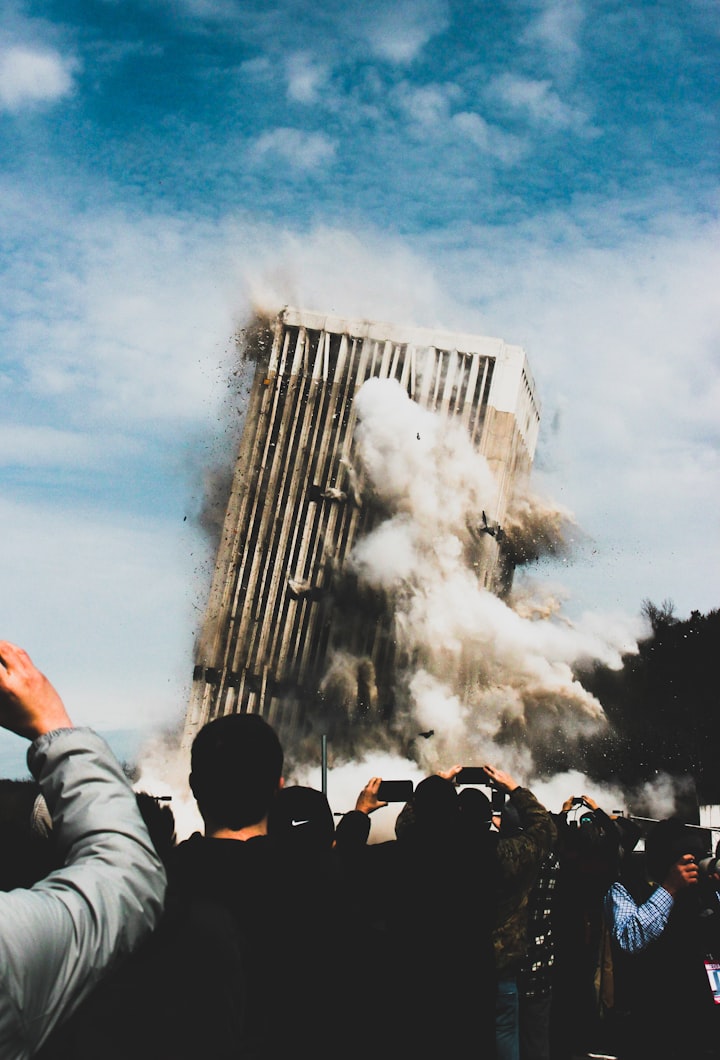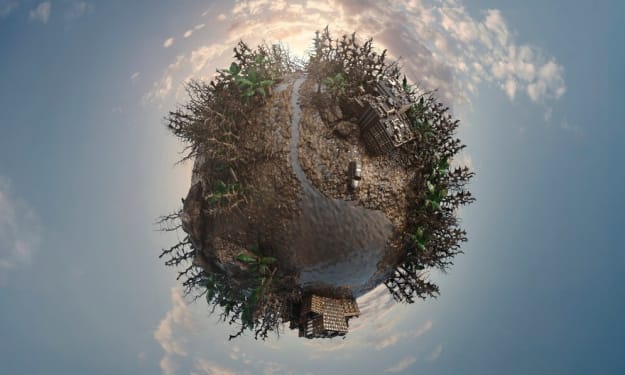
Architecture makes one of the human civilizations, from the ancient Egyptian pyramids to today's Burj Khalifa in Dubai, human then writes another history with engineering.
But things are not always so perfect, from ancient times to the present, there are many failed construction projects.
Once the project is a problem, it is a huge loss, serious will also cause casualties.
There are three projects in the world, failing, but there are unexpected gains.
The Swinging Bridge
Bridges are one of the wonders in the history of human architecture, overcoming spatial barriers and allowing the connection of two spaces that do not intersect.
However, bridges are also the most accidental in human construction, because a very small reason in the process of construction can lead to a huge tragedy.
The Tacoma Channel Bridge in the United States is a living example.
In 1940, American engineers built two bridges across the Tacoma Channel in Washington State, one of which was the Tacoma Channel Bridge.
Four months after it was opened, the bridge collapsed in the wind and $8 million was lost.
The bridge had already laid the root of the trouble from the beginning of its establishment.
The birth of the bridge was not smooth from the beginning, facing various problems of insufficient budget, the program has been revised.
At this point, Moiseev, the design engineer of the Golden Gate Bridge, took it upon himself to propose a less costly solution by replacing the original steel truss main girders used with steel plate girders and reducing the height from 7.6 meters to 2.4 meters.
The Golden Gate Bridge designed with Moiseyv's participation
When the engineering team took a look at the proposal, they felt that it was a little resourceful and adopted it.
After 2 years of work, the Tacoma Channel Bridge was finally opened to traffic.
However, on the first day of the opening, people did not feel right, about how this bridge is shaking.
Every driver who passed the bridge said that the bridge was shaking so much that it felt like it was dancing, which made them scared to cross the bridge every day.
However, the Tacoma Channel Bridge swaying thing after the fermentation, has become a selling point, many people came to see the swaying bridge, and they also gave the bridge the alias "dancing Getty".
But for the engineers, the bridge swaying has meant failure, and it is also a huge potential problem.
If there was a wind that had the same frequency as the bridge, even a slight breeze would destroy the bridge.
Four months later, the engineers' fears were realized, and the bridge was destroyed by a wind that was not considered a gale, a scene that happened to be filmed.
The Tacoma Channel Bridge became an overnight sensation, but not in a good way, of course.
The United States took the incident seriously and sent aerodynamicist Von Kamen to investigate the cause of the accident.
The cause of the accident was the replacement of the original truss main girders, which caused the bearing surface of the bridge to become the upper and lower ends, so the bridge had been showing rippling motion.
The wind that destroyed it, with the same frequency as the inherent frequency of the bridge, resonated to its maximum, so the bridge broke directly in the fluctuation.
It was eventually concluded that the bridge was only concerned with cutting costs and did not take into account the inherent frequency of its body with the local wind direction and that replacing the main girders was the most important cause.
After this accident, bridges around the world would install dampers during the construction process to prevent resonance between the bridge and the wind, which is considered its contribution to the world of construction engineering.
20 Fenchurch Street
In addition to failed bridge projects, there are also many failed projects in building construction, with 20 Fenchurch Street failing in a particularly unusual way.
20 Fenchurch Street is a British high-rise building located on Fenchurch Street, London's financial street, and is also nicknamed the "Walkie Talkie Building".
The building, completed in 2012, has a unique shape, with a convex front and concave back, and a total of 37 floors, which stands out among the surrounding commercial buildings.
In 2013, a car was parked in the plaza of 20 Fenchurch Street, but it didn't take long for all the plastic inside to melt away.
Surveillance at the scene showed no signs of arson, and the investigation finally revealed that the sunlight had burned the interior of the car.
And the sunlight guide to come is the concave surface of 20 Fenchurch Street.
It turns out that 20 Fenchurch Street is full of glass, its concave design convergence of the sun's rays, the convergence of the light just shone on the opposite square, the car was coincidentally stuck in the focus.
Since 20 Fenchurch Street was built, the temperature of the square has not come down, if it is a sunny day, the temperature of the square will exceed 70 degrees.
If you come to the spotlight, then you can just grill the barbecue.
Fortunately, on more cloudy days in London, England, the square is not yet turned into hell on earth.
The building cost more than 200 million pounds, and the result was to heat the square across the street.
The failure of 20 Fenchurch Street also gave all commercial buildings a wake-up call, in today's era of full-body glass buildings, if want to repair buildings with concave surfaces, be sure to pay attention to detect where the focus of the concave surface, do not a careless, to another building to ignite.
Biosphere 2
The same full-body glass, Biosphere 2 in the 1980s also failed, but its failure was hailed as the world's greatest failure, what is going on?
The United States achieved a series of amazing results in space exploration in the last century, so they decided to simulate the ecological environment and create an artificial biosphere to achieve self-sufficiency inside.
So with the sponsorship of a kind tycoon, an all-glass building, Biosphere 2, was built in the middle of the Arizona desert.
Biosphere 2 has plants, animals, and microorganisms inside, each in its way, and also artificially simulates the ocean, rainforest, grassland, and other environments.
Eventually, an experimental group of four men and four women entered Biosphere 2.
The original plan envisaged that Biosphere 2 was all closed, with plants inside providing oxygen and absorbing carbon dioxide, and that the eight experimenters would stay inside for two years.
However, the group of experimenters did not take long to enter, the oxygen level fell below the safe value, and the outside world had to supply oxygen to the interior.
As the experiment progressed, the oxygen level inside never returned to normal.
Eventually, after 21 months inside, the experiment was called off, leaving behind murky air and a withered ecology.
The experimenters were so disgruntled with each other that half of the creatures inside died, turning Biosphere 2 into a hellish place.
The failure of Biosphere 2 showed the world how important the ecology of the Earth is and that there is no way for humans to replicate the Earth's environment.
If the Earth's environment is destroyed, we have no other choice but to accept the destruction.
And Biosphere 2 also proved that interstellar migration, which mankind previously imagined, is more difficult than imagined, and that there is no way for us to leave the Earth's ecology.
The failure of other projects can find a responsible person, but the failure of this project is perhaps the fault of all mankind, the fault of overestimating themselves.
Failure is not terrible, what is terrible is not learning from the failure after the failure, and finally repeating the failure.
Looking back at the development of science, there are countless failure cases mixed in it, such as the Curie couple's radium, which needed to be extracted from tens of thousands of tons of asphalt.
However, sometimes the two of them boiled a whole day of asphalt, but could not get one ten-thousandth of a gram of radium, often working all day, with almost zero harvests.
If the Curies had chosen to give up, would we still recognize radium as an element today?
So it was their failure that led to their subsequent success.
Each of these projects cost a lot of money and the engineers put their heart and soul into them, but the results were not what they wanted and caused even more damage, for which the engineers lost their jobs and ended their careers.
However, these failures were a wake-up call for future construction projects, allowing future generations to continue to improve technology and correct mistakes.
After the Tacoma Channel Bridge, for example, the world's sea bridges have largely stopped swaying and even built better ones.
After 20 Fenchurch Street, all concave glass buildings have been carefully designed to ensure aesthetics and also to eliminate similar phenomena.
Not to mention Biosphere 2, which showed the importance of the Earth and combated the unbearable arrogance of many people at the time.
Many people at that time thought that mankind could conquer the earth, not knowing that we were only the inhabitants of the earth.
The lessons learned are the wealth that these failed buildings left to future generations, and some compensation for the damage they caused.






Comments
There are no comments for this story
Be the first to respond and start the conversation.